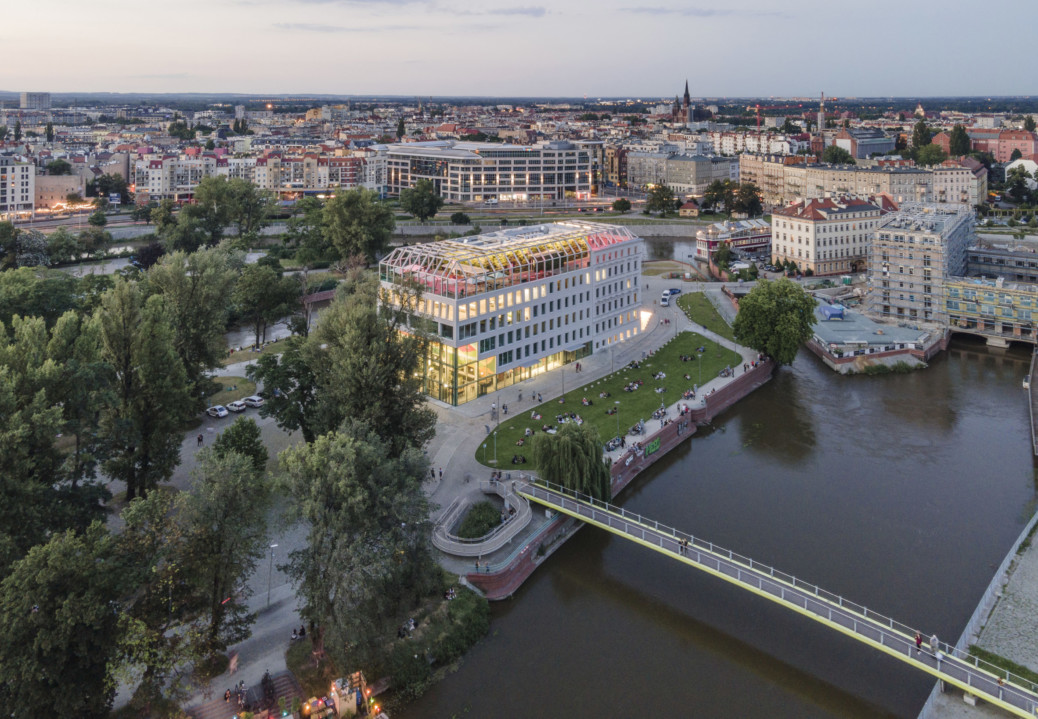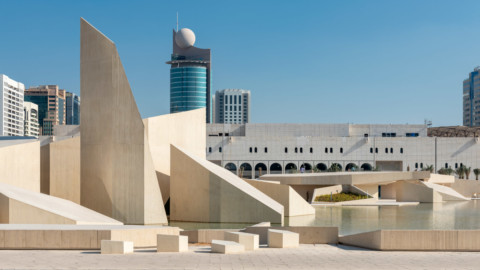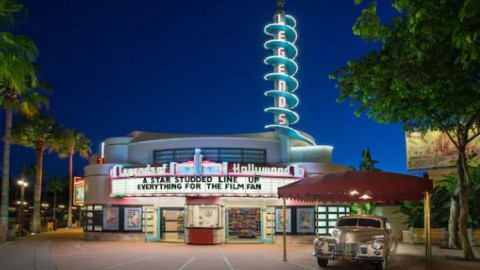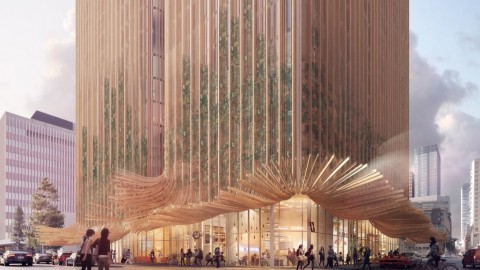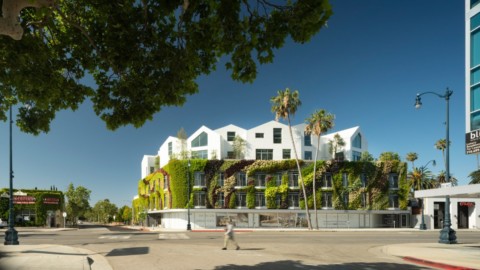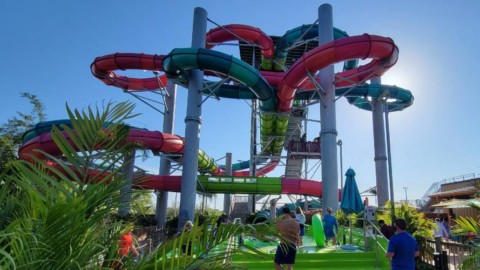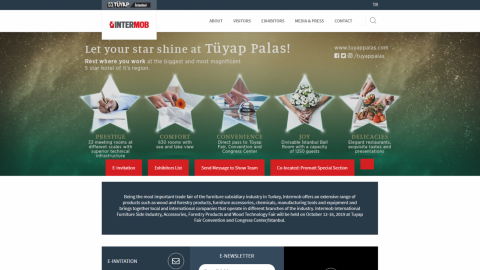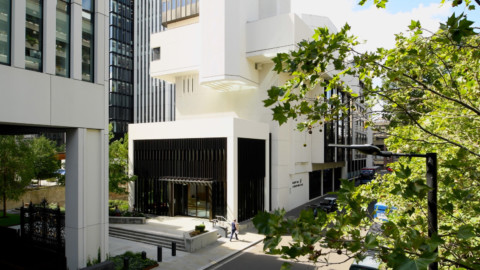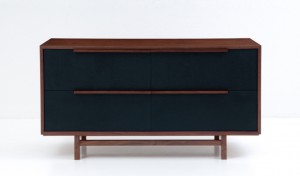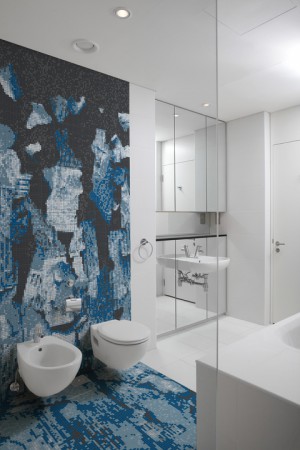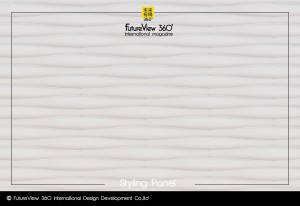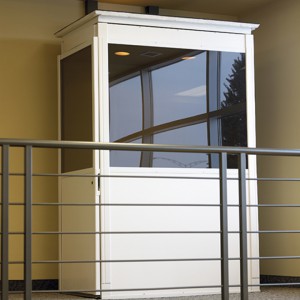Polish visual artist Alicja Biała has painted a set of colourful large-scale murals inside the Concordia Design building in Wrocław, Poland, as part of its renovation and extension by architecture firm MVRDV.
The murals cover 500 square metres of the office building and rise as high as ten metres. The art was informed by the architecture of the building, as well as local folklore.
波蘭視覺藝術家AlicjaBiała在波蘭弗羅茨瓦夫的Concordia Design大樓內繪製了一組彩色的大型壁畫,作為建築公司MVRDV進行的翻新和擴建的一部分。
壁畫覆蓋了辦公樓的500平方米,高達十米。 該建築的建築以及當地民俗知識為藝術增色不少。
Artist Alicja Biała decorates MVRDV project in Wrocław with floor-to-ceiling murals | Dezeen
Biała, who also designed a large light sculpture for the project, lived on-site for five months while painting them and used discarded materials from the site for some of her designs.
She worked around the existing architecture to design the murals that depict characters, some of them mythical, as well as flora and fauna.
比亞瓦(Biała)還為該項目設計了一個大型的輕雕塑,她在現場繪畫時居住了五個月,並使用了現場廢棄的材料進行了一些設計。
她在現有建築周圍工作,設計了壁畫來描繪人物,其中有些是神話人物,還有動植物。
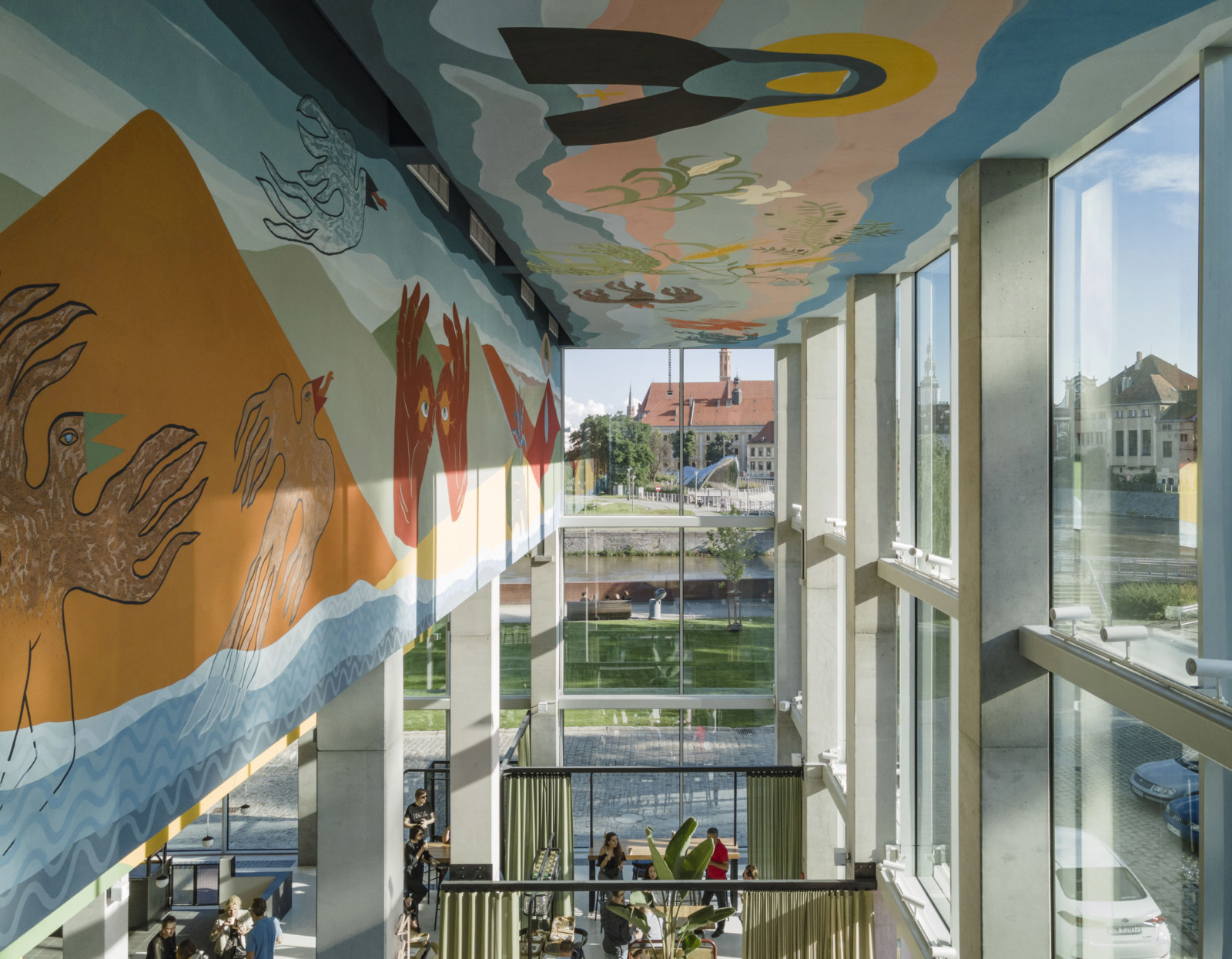
“It was quite complex to plan out and design, given that it’s not one wall, it’s not flat,” Biała told Dezeen.
“The main painting consists of connected two walls and ceilings. All had to work well from all perspectives, different angles and be coherent.”
Dutch architecture firm MVRDV renovated and extended an existing 19th-century building on the Słodowa Island in Wrocław to create Concordia Design, keeping the facade of the historical building.
比亞瓦對Dezeen表示:“規劃和設計相當複雜,因為它不是一堵牆,也不是平坦的。”
“主要的繪畫包括相連的兩堵牆和天花板。從各個角度,不同角度和連貫性來看,所有作品都必須工作良好。”
荷蘭建築公司MVRDV對弗羅茨瓦夫的Słodowa島上的一棟現有19世紀建築物進行了翻新和擴建,以創建Concordia Design,並保留了歷史建築的外觀。
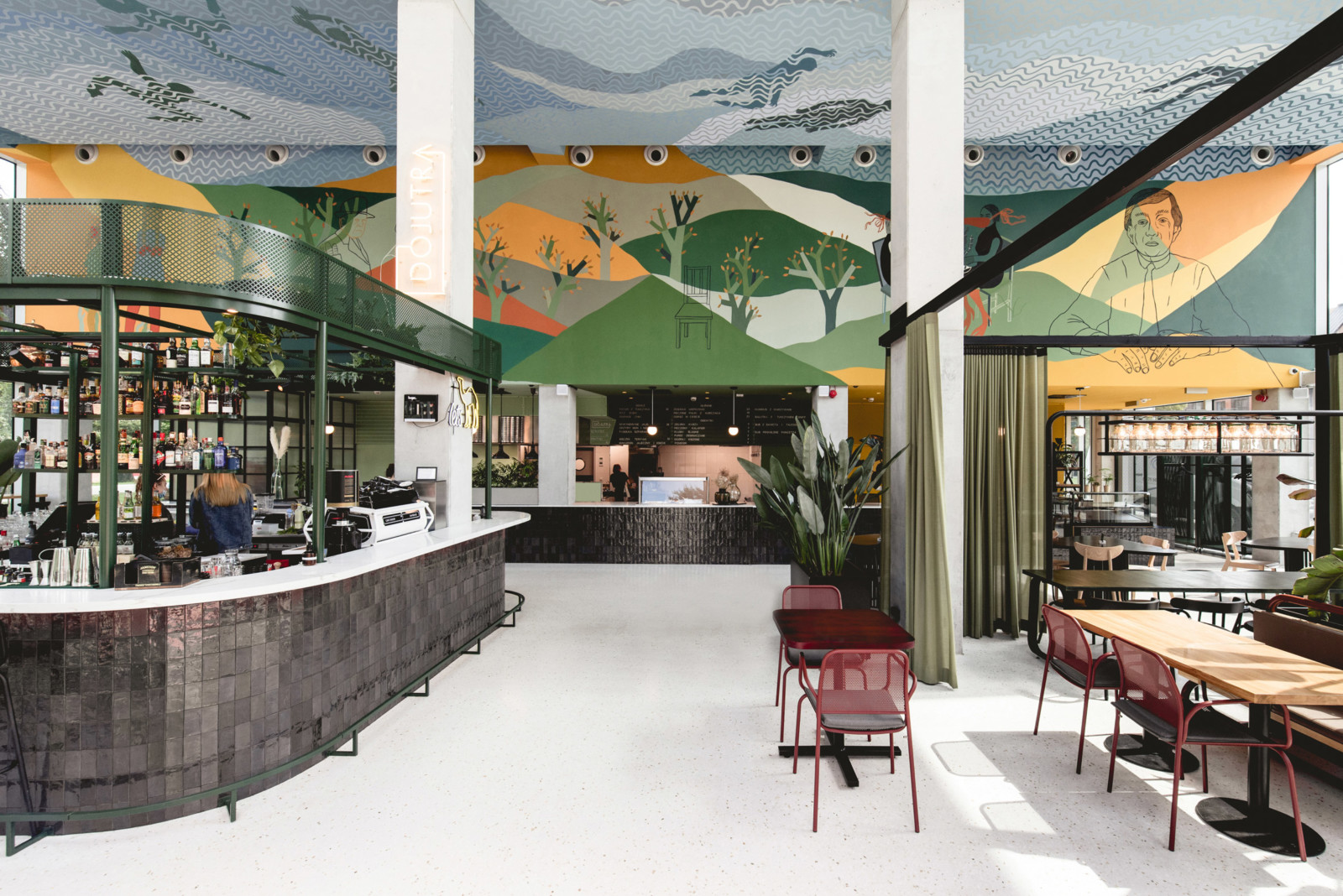
It now houses co-working spaces, an event space, a food hall, and a roof terrace as well as a restaurant and cafe.
Biała’s large entrance artwork is visible through the glass facade of the extension and covers about 400 square metres, before transitioning for another 100 square metres throughout the corridor that connects the two main spaces of Concordia.
現在,它設有共同工作空間,活動空間,美食大廳和屋頂露台以及餐廳和咖啡廳。
通過擴建的玻璃幕牆可以看到比亞瓦的大型入口藝術品,佔地約400平方米,然後在連接康科迪亞兩個主要空間的走廊過渡到另外100平方米。

The studio created the opening towards the park, where the mural is displayed, early on in the design process to make the building more inviting.
“On both ends of the building we wanted to open up the building with a large void space in order to be inviting visitors and by-passers into the building,” MVRDV partner Fokke Moerel told Dezeen.
“In the extension, we could also make the void transparent, while on the existing side, it hides behind the old, monumental facade.”
“The mural was an early concept to align with the presence of this type of art in Wroclaw and to create an inclusive message towards the surroundings: joyful, playful and stories of the history,” she added.
Biała also created art “interventions” in each of the 75 office spaces and on the reception desks on two floors.
工作室在設計過程的早期就創建了通往公園的開口,壁畫被展示在該公園中,以使建築物更具吸引力。
MVRDV合夥人Fokke Moerel告訴Dezeen:“在建築物的兩端,我們希望開放具有較大空隙的建築物,以吸引遊客和旁路人進入建築物。”
“在擴展中,我們還可以使該空隙透明,而在現有的一面,它隱藏在古老的紀念性外牆後面。”
她說:“壁畫是一個早期的概念,與弗羅茨瓦夫這類藝術的存在相吻合,並向周圍環境創造了一個包容性的信息:歡樂,嬉戲和歷史故事,”她補充說。
比亞瓦(Biała)還在75個辦公空間中的每一個以及兩層的接待台中創建了藝術“干預”。
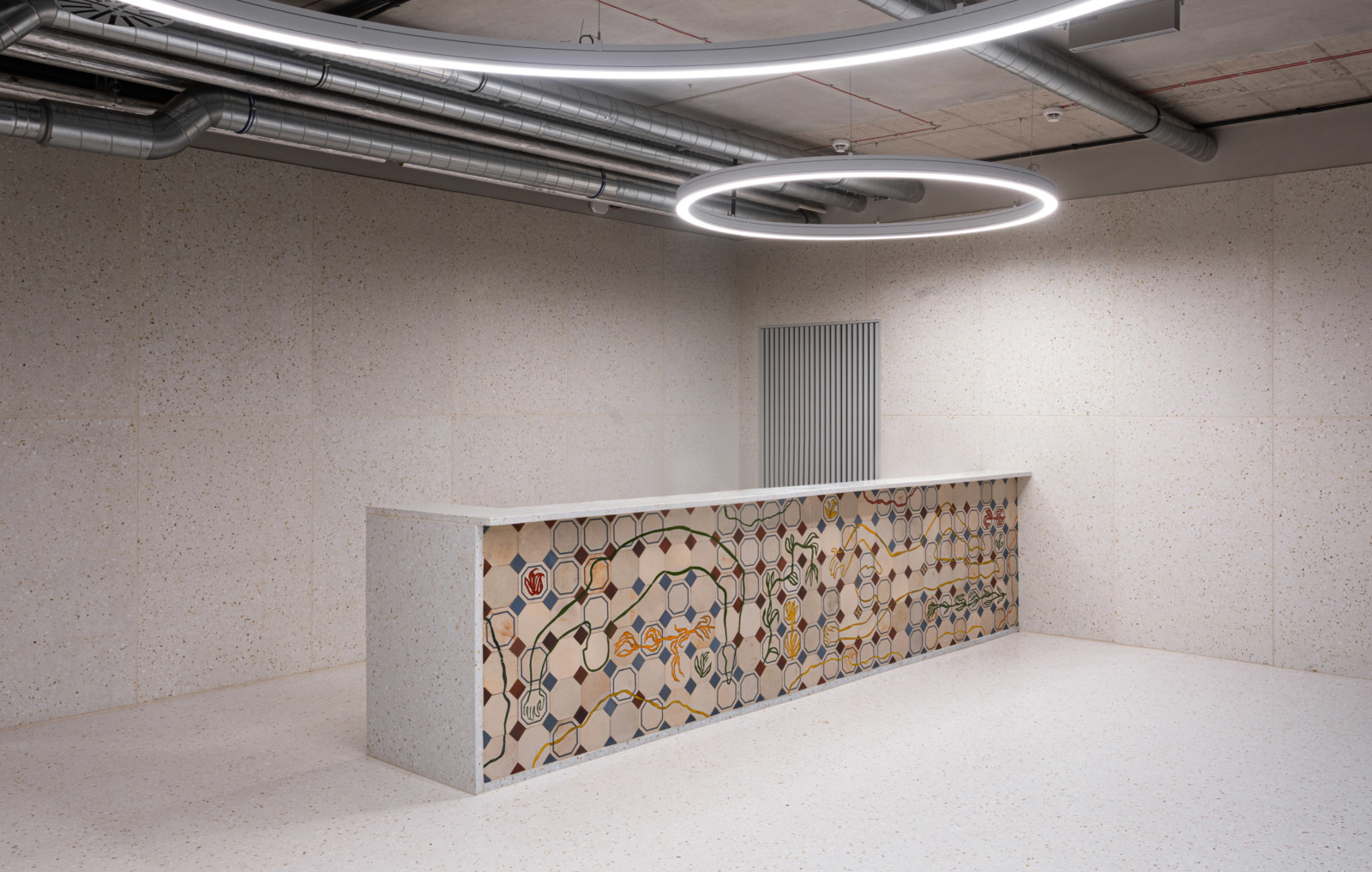
She used 19th-century tiles which she found onsite to clad a large reception desk, after cleaning them and then reglazing them with two human figures and decorative patterns and flowers.
“It’s quite difficult to reglaze something from so long ago without issues,” she said. “They warp and crack, the glaze crawls off. But in the end, the pieces and their history speak their own design; we just give them another chance.”
她用19世紀的瓷磚在現場找到了自己,然後將它們蓋在一張寬大的接待台上,然後清洗它們,然後用兩個人像,裝飾圖案和花朵給它們上釉。
她說:“從很久以前就沒有問題地給上釉很困難。它們會翹曲並破裂,釉會逐漸脫落。 但是最後,作品及其歷史講述著他們自己的設計。 我們只是給他們一次機會。”
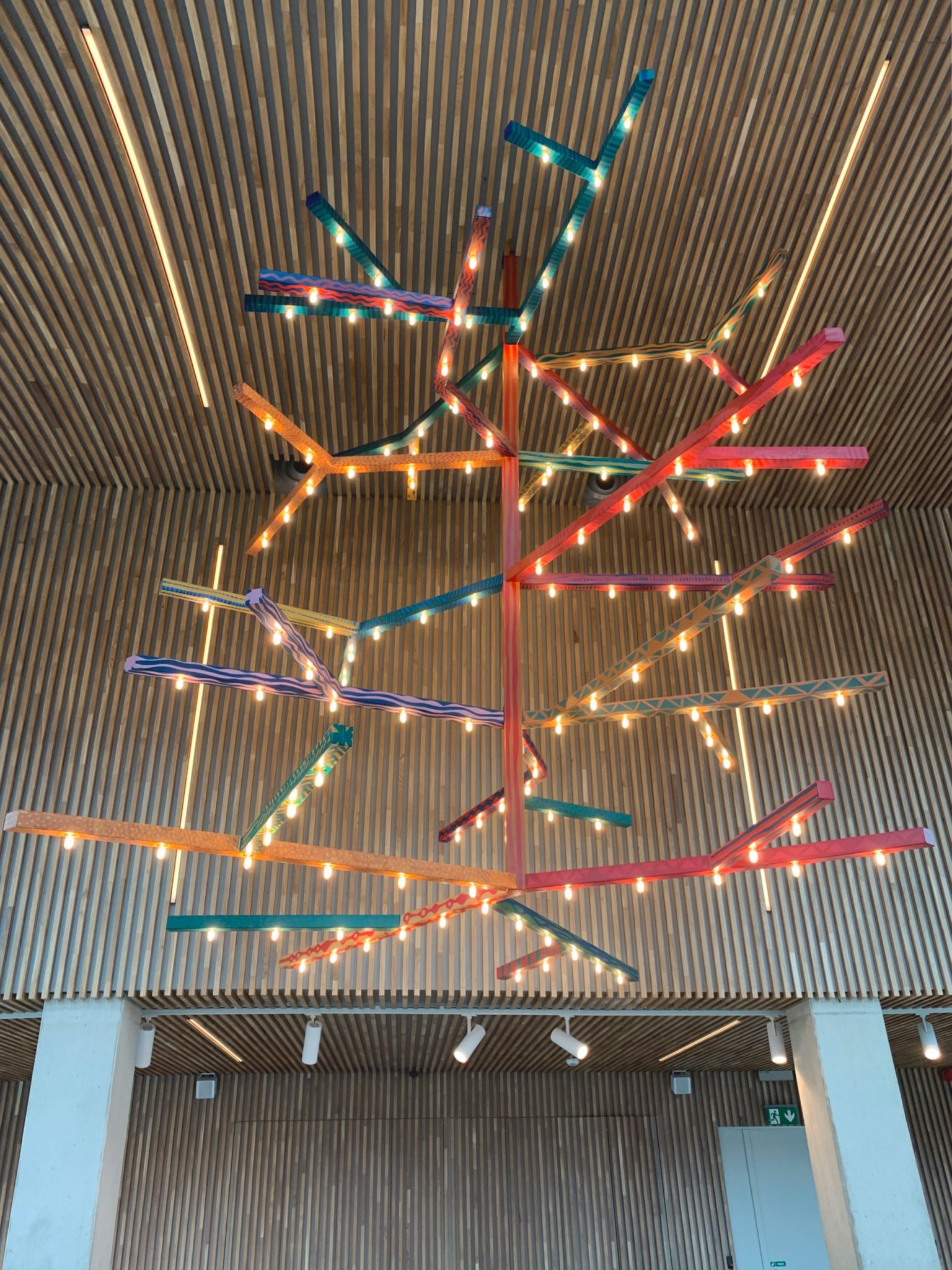
The artist also designed a colourful four-by-four metres light sculpture for the project, which weighs half a ton and hangs in the foyer on the historical side of the building.
“It was inspired by pagan folk decoration called traditionally ‘spider’ or ‘chandelier,'” she said.
“It is a colourful ornament made usually out of paper, straw, textiles. Those folk ‘installations’ were to symbolise happiness, harmony, good harvest.”
這位藝術家還為該項目設計了一個彩色的四乘四米輕型雕塑,重達半噸,並懸掛在建築物歷史一側的門廳中。
她說:“它的靈感來自異教徒的民間裝飾,傳統上稱為“蜘蛛”或“枝形吊燈”。
“這是一種彩色的裝飾品,通常由紙,稻草,紡織品製成。那些民間的’裝置’象徵著幸福,和諧,豐收。”
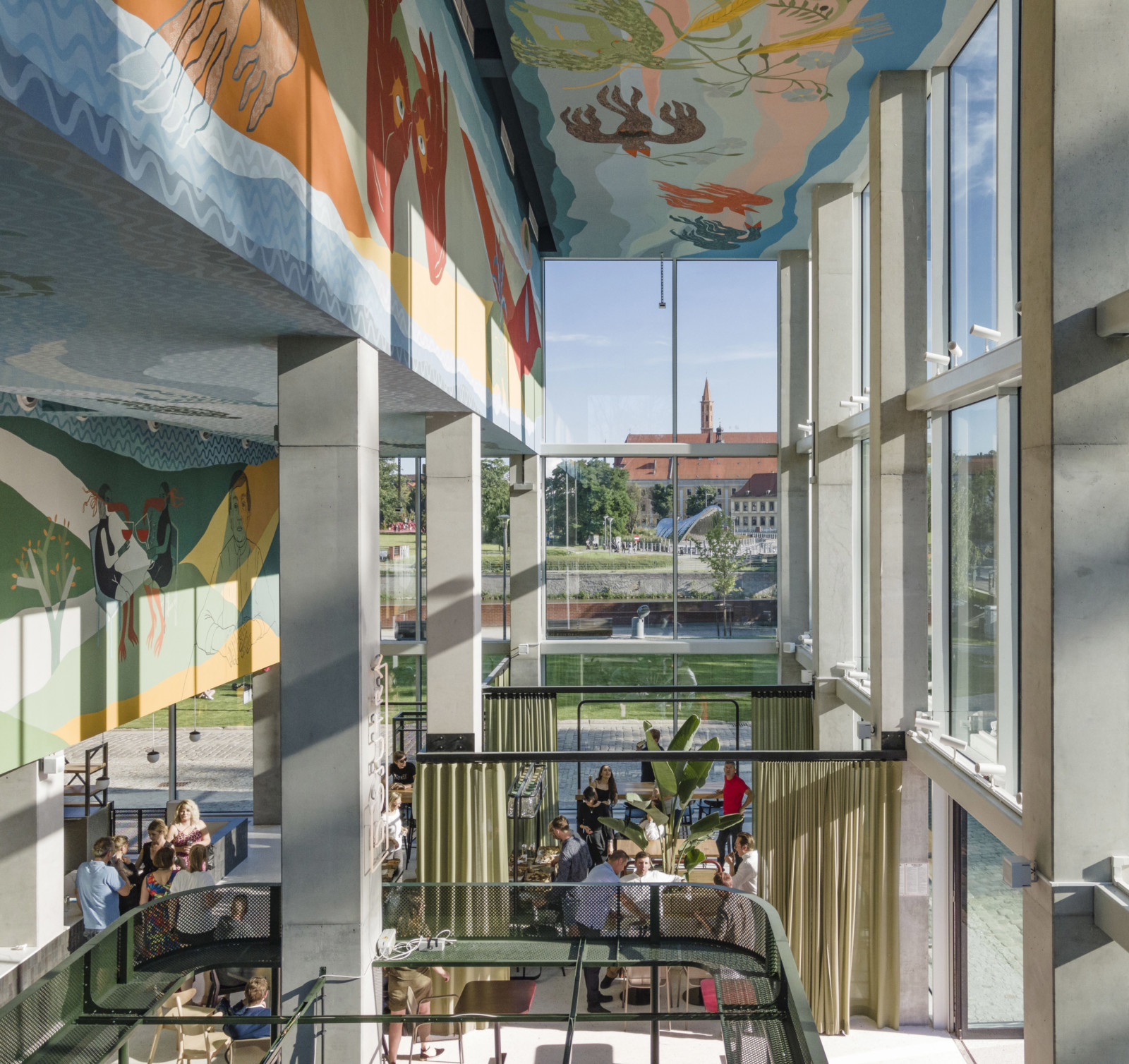
Biała, who won a competition to create the Concordia Design project, had previously created totem poles that sit underneath MVRDV’s Baltyk building in Poznan and visualise climate-change statistics.
She will paint a final large mural on Concordia Design’s top floor next year.
“The island has always been a gathering place for the city, a space of many different people,” she said. “I wanted to show this multiplicity in a way that is similar to sitting on a bench on the island and watching the many stories pass by.”
Swedish design duo Folkform also recently created a mural for a public swimming pool in Spånga, while London-based artist Camille Walala revived an east London high street with a community-funded mural.
Biała曾贏得創建Concordia Design項目的競賽,此前曾在MVRDV位於波茲南的Baltyk大樓下方創建圖騰柱,並可視化氣候變化統計數據。
明年,她將在Concordia Design的頂層繪製最後一幅大型壁畫。
她說:“島上一直是這座城市的聚集地,這裡有許多不同的人。我想展示這種多樣性,就像坐在島上的長椅上看許多故事一樣。 經過。”
瑞典設計二人組Folkform最近還在Spånga為公共游泳池創作了壁畫,而倫敦藝術家Camille Walala用社區資助的壁畫修復了倫敦東部的一條高街。
FROM:https://www.dezeen.com/2020/12/23/alicja-biala-mvrdv-building-wroclaw-murals/

